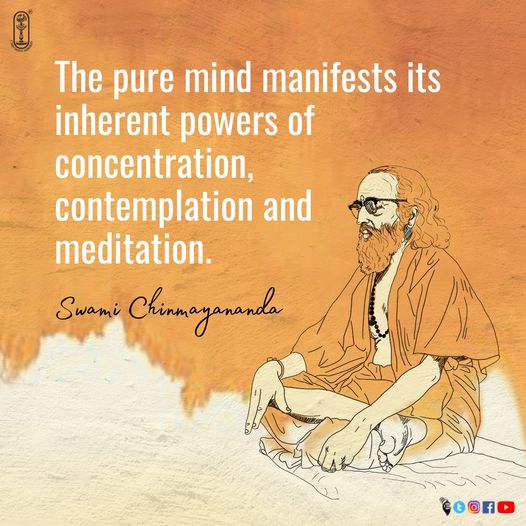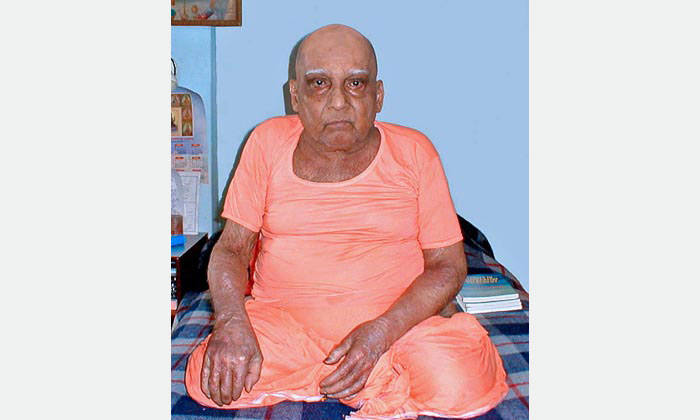Lesson on The Taittiriya Upanishad - 5. Swami Krishnananda.
=========================================================================
=========================================================================
Thursday, June 02, 2022. 22:00.
Post-5.
=========================================================================
Tasmad va etasmad atmana akasa sambhuta, akasad vayuh, vayor agnih, agner apah, adbhyah prthivi, prthivya osadhayah (Tait. 2.1.1): “All vegetation started from the earth.” Osadhibhyo annam: The diet that we consume is nothing but the vegetation growing on earth. Annat purushah: Our personality is an adumbration, solidification, concretisation, clarification—whatever we may call it—of the food that we eat. In the personality of the human being we find in a miniature form all that has come cosmically down to the earth, right from the Supreme Brahman—satyam jnanam anantam brahma. So the universe is called brahmanda and the individual is called pindanda. The macrocosm is the universe, and the microcosm, or the individual, is a cross-section of the macrocosm. All that is in the universe you will find in yourself. You are a miniature of creation. If you know yourself, you know the whole world. This is why it is said, “Know thyself and be free.” Nobody says “Go outside and know things.” It will not serve your purpose. Know yourself and all things are known, because you are the nearest thing that can be contacted and the nearest thing containing all things that are the furthest and the remotest. Therefore, the Ultimate Reality is also called the nearest and the furthest. Tad dure tad vad antike (Isa 5): “Very far is It”—in terms of the spatio-temporal expanse of creation; “Very near is It”—as the Self of your own existence.
The miniature individual, as I mentioned, has all the layers of the universe. These are the physicality of the lowest earth, the vibratory form of the prana, the mental creation or the mentation, the power of thought, which is reflected in the process of creation from the Ultimate Being Itself, and a peculiar negation that we experience in our own self in the form of the ultimate causality of sleep, which is comparable to the negation that was referred to just now in the form of the manifestation of space-time-motion. This individualised microcosmic representation of the cosmic layers is seen individually as a series of what is called the koshas, or the coverings of the consciousness in us. We may, in a way, say the whole universe is a covering up over Brahman.
The cosmic sheaths can be conceived, and they are really conceived many a time when we speak of Brahman becoming Ishvara, Ishvara becoming Hiranyagarbha, Hiranyagarbha becoming Virat, and so on. These sheaths in us—the physical, vital, mental, intellectual and causal—are the inverted forms of the otherwise-vertical, we may say, forms of the cosmic sheaths which are in the form of the five elements—earth, water, fire, air and ether, going upwards from below. The Ultimate satyam jnanam anantam is negated, as it were, in this creation, because the Universal Being is absent in all that is external. The word ‘external' contradicts anything that can be considered as universal. In a way, God is denied in this world. We cannot see God anywhere; we see only particulars and spread-out things which are external in nature. Nevertheless, as the Isavasya Upanishad warns us, the so-called negated, abolished existence of the Supreme Reality is also hiddenly present as the Atman behind the earth, the Atman behind water, fire, air and ether. There is an Atman even behind space and time. Various degrees of the manifestation of universality can be seen in the operation of the five elements. The Universal is least manifest in the earth, more manifest in water, still more in fire, still more in air and still more in space, so that space looks almost universal, but yet it is not universal because it is externalised.
In a similar manner, in our own personality also, there is a degree of the manifestation of externality and materiality. The physical body is the most material and the most external, visible thing among other things. Very hard substance is this physical body and very external; we can see it with the eyes. The internal externalities are not so easily contactable, but yet are conceivable and observable through analysis. The so-called physicality and externality of the body is made to feel its existence, its very life itself, by the movement of a vibration inside, called prana shakti. When the prana operates through the cells of the body, we feel that the body is alive; every little fingertip, every toe is alive. It is alive, so-called, because of the prana pervading every part of the body. If the prana is withdrawn, there is paralytic stroke or even death of that particular part. If the prana is entirely withdrawn, the so-called living body becomes a corpse. It becomes dead matter—matter per se.
To be continued ....
=========================================================================






Comments
Post a Comment